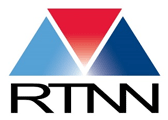
Lunch is on us! RTNN to host free Lunch and Learn for local companies
Representatives from local companies are invited to join us on Tuesday July 12, 2022 from 11:30am-1:00pm EST at First Flight Venture Center in Research Triangle Park (Durham, NC) for an RTNN “Lunch and Learn” Event. Director Jacob Jones will present on analytical/nanofabrication facilities and expertise available across NC State University, Duke University, and UNC Chapel-Hill and RTNN’s network and affiliates and how they can be of use to research and development at companies. Lunch will be provided. Please limit company representatives to no more than 2 people.
Please RSVP by July 6, 2022 via this form:
Click Here to RSVP via Google Form
If you have any issues or questions, please contact Phillip Strader (phillip_strader@ncsu.edu)
First Flight Venture Center offering scholarships to Propeller Pre-Accelerator Program
First Flight Venture Center is offering scholarships to its Propeller Program: a 6-week entrepreneurial design thinking program which helps founders and entrepreneurs determine whether there is sufficient value to pursue a product or service idea. The program helps entrepreneurs identify potential markets, develop a path to market strategy, and learn how to communicate the value of the idea to early stakeholders and adopters. This program is an excellent opportunity for local/small companies, or anyone with a science and technology business idea seeking guidance on determine its viability and a path to success.
For more info on this program and to apply, visit FFVC’s Propeller webpage: https://www.ffvcnc.org/propeller
Free facility access available through RTNN Kickstarter program
The RTNN offers free facility access via the RTNN Kickstarter program – anyone can apply for up to $1,000 in facility access value in RTNN facilities. Applications are accepted on a rolling basis with 2 “priority” deadlines once per year. Read more and apply on the RTNN Kickstarter webpage: https://rtnn.ncsu.edu/opportunities/kickstarter/











